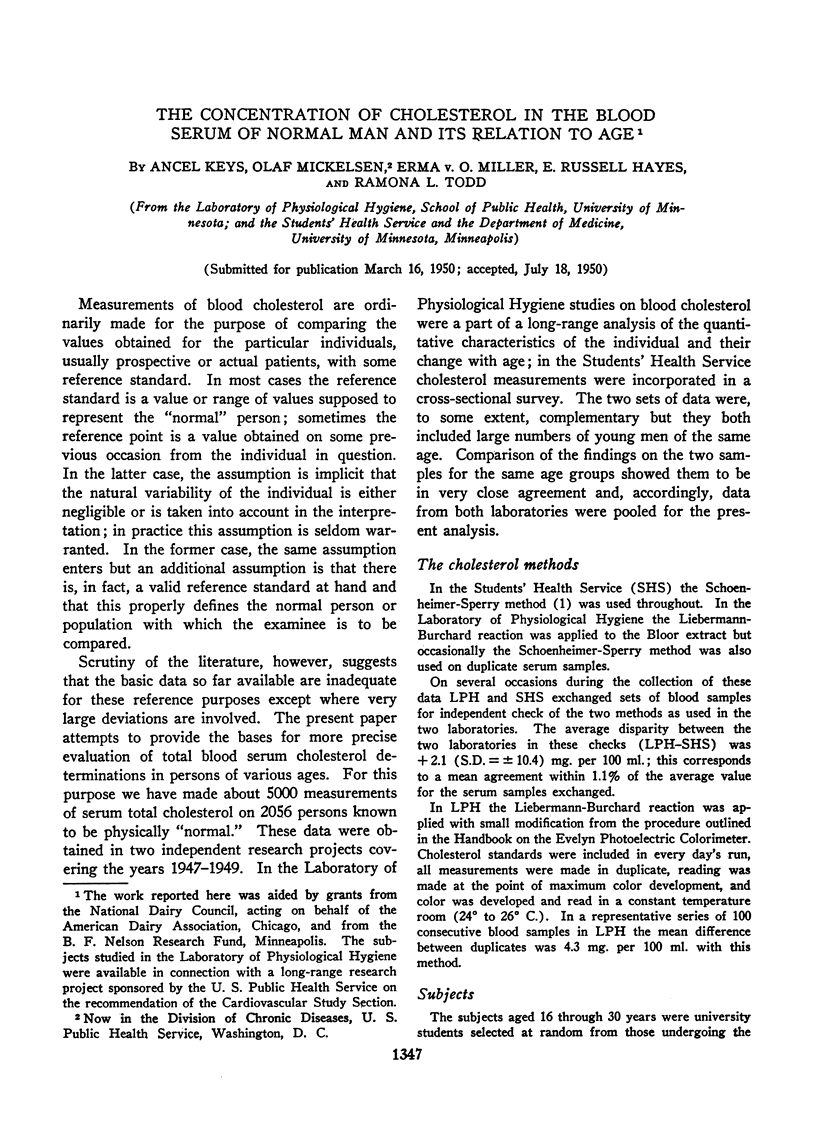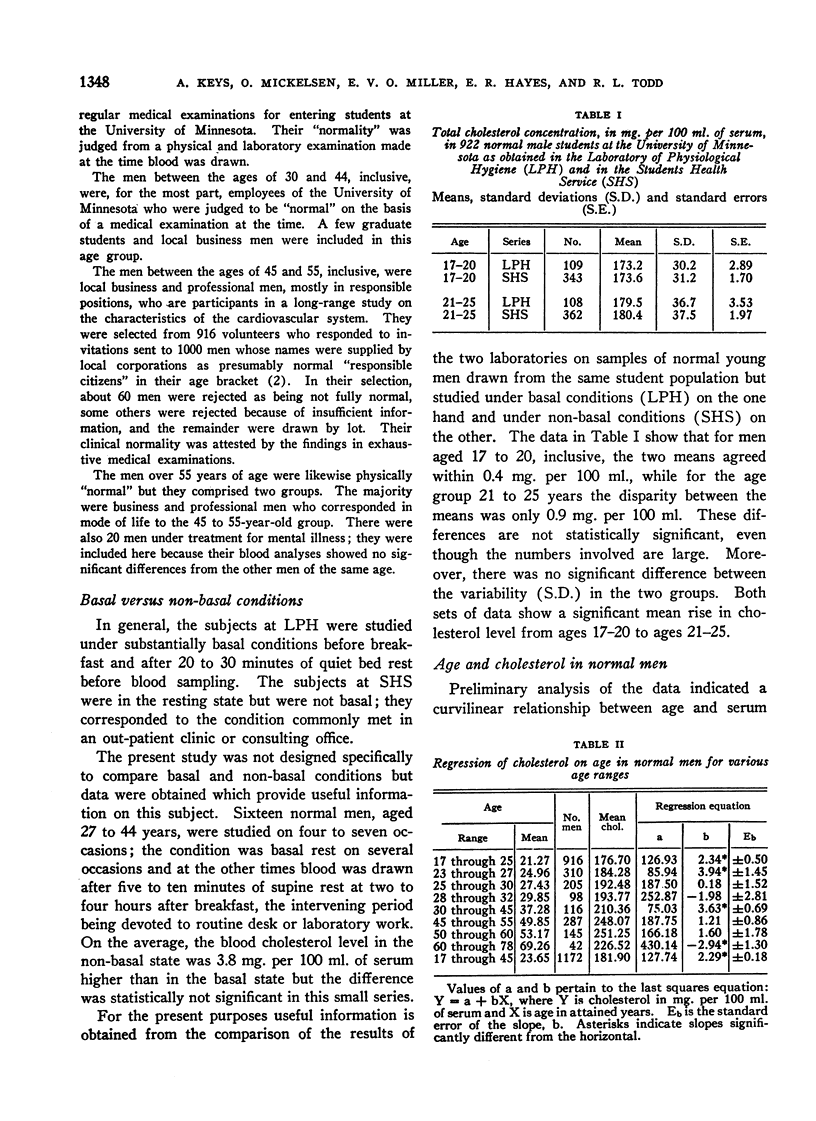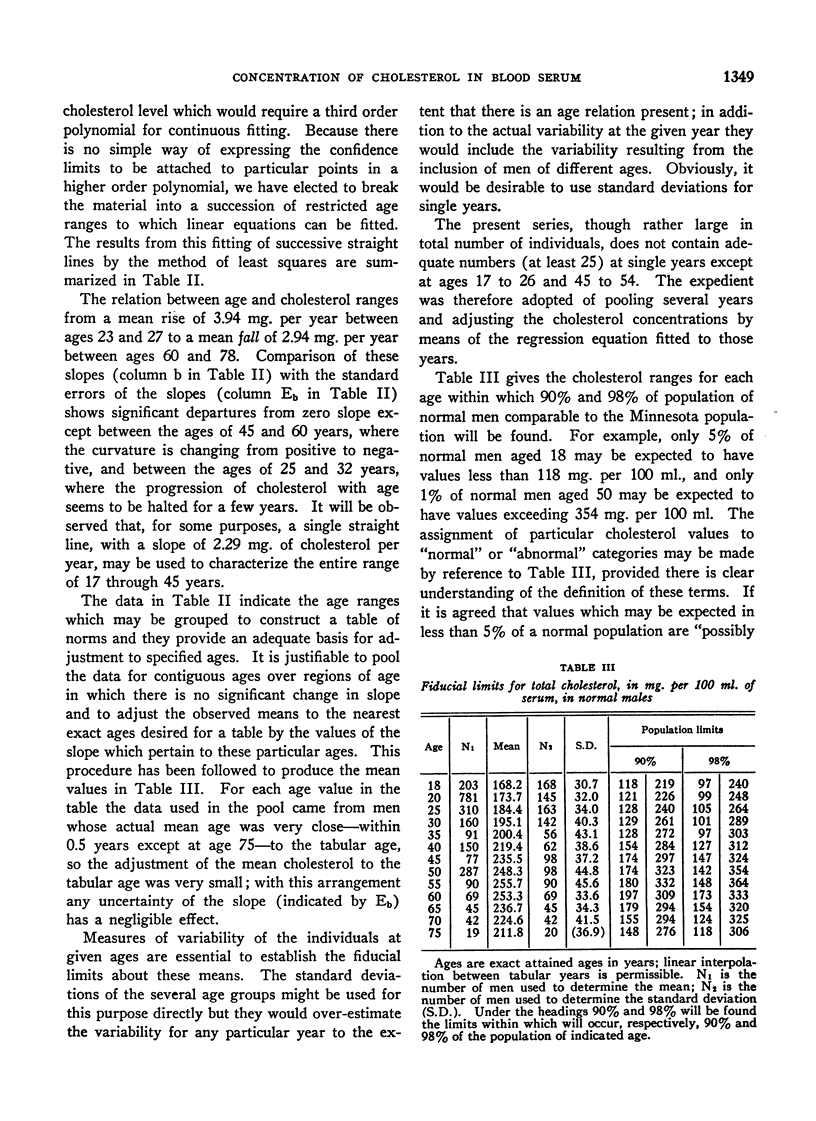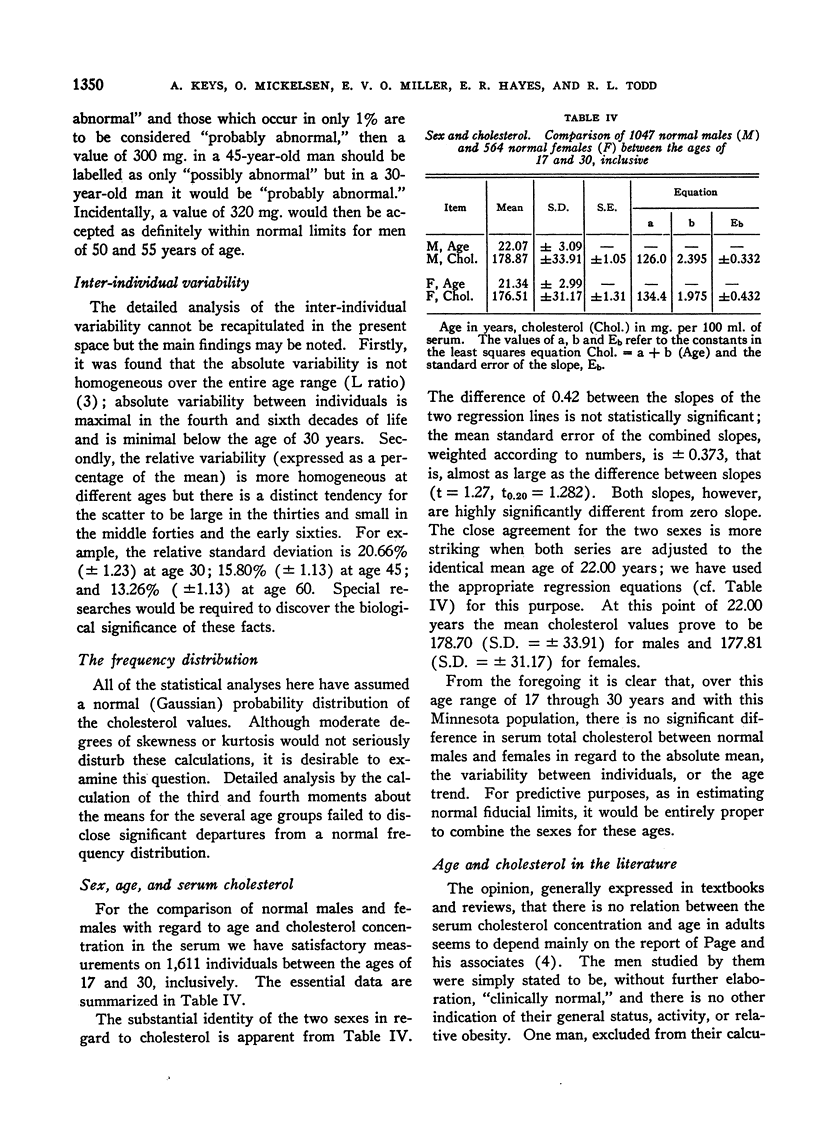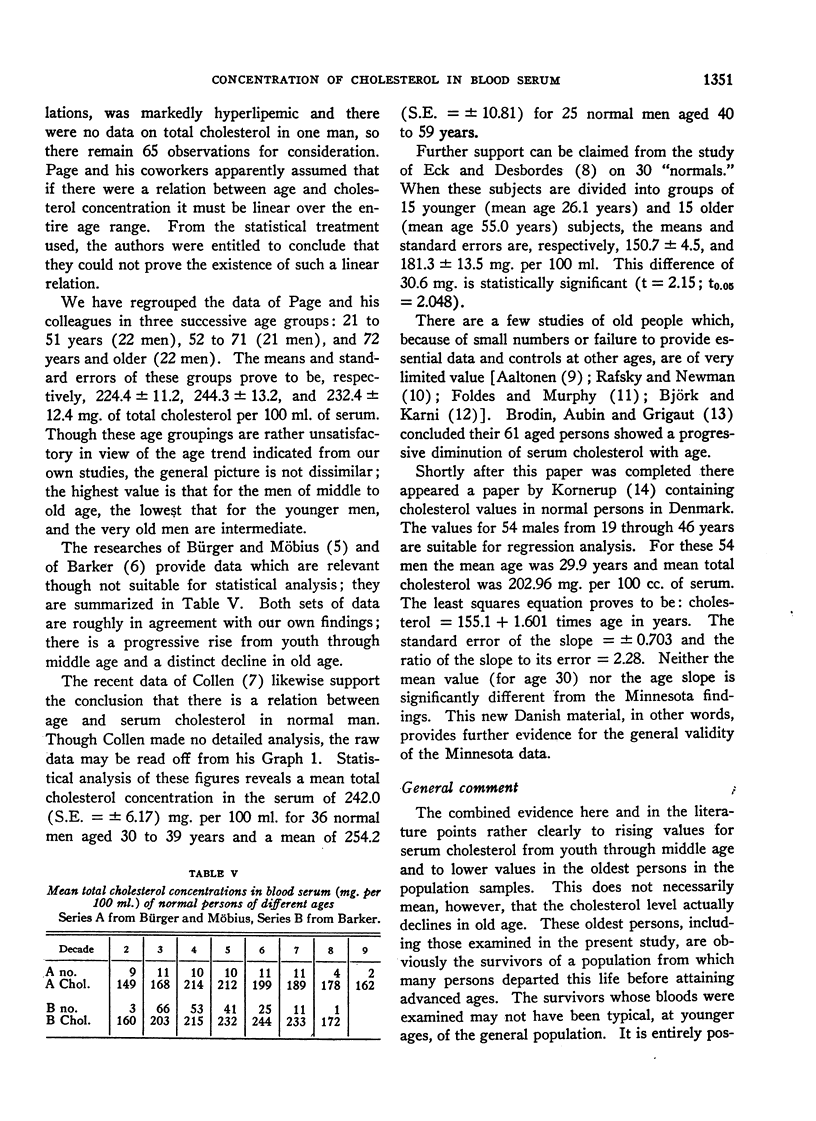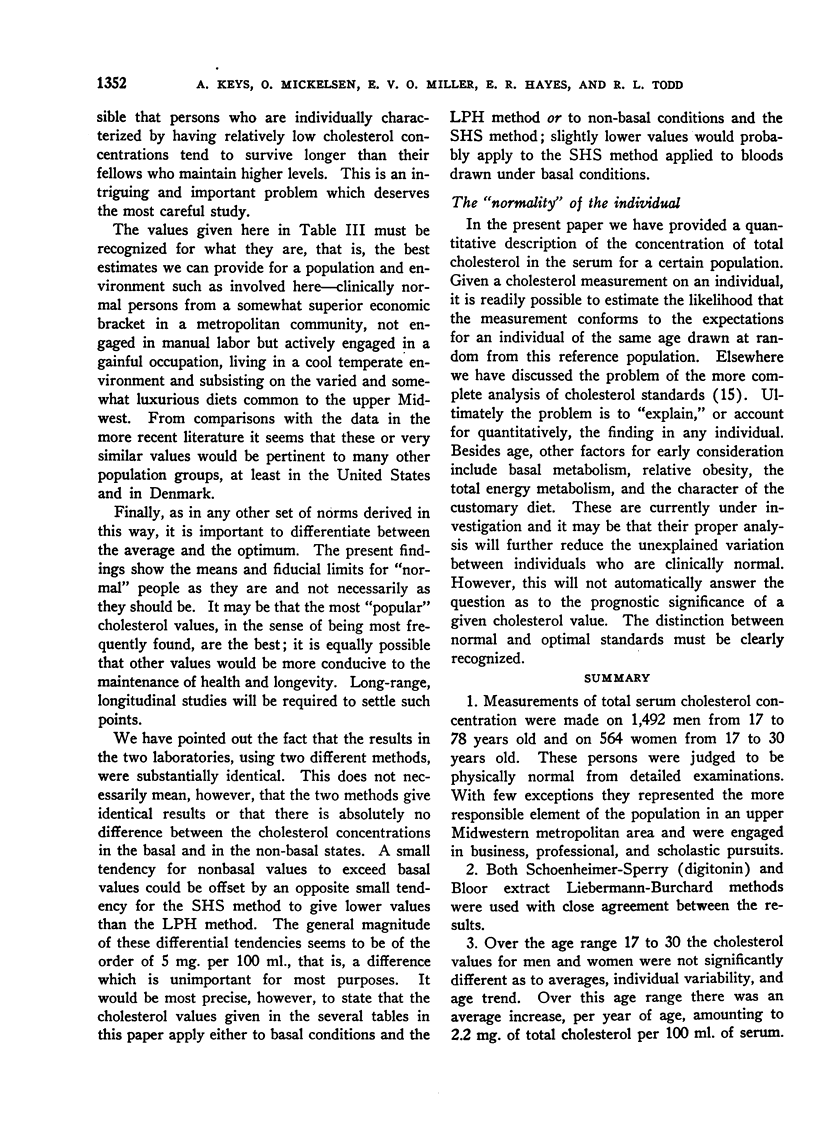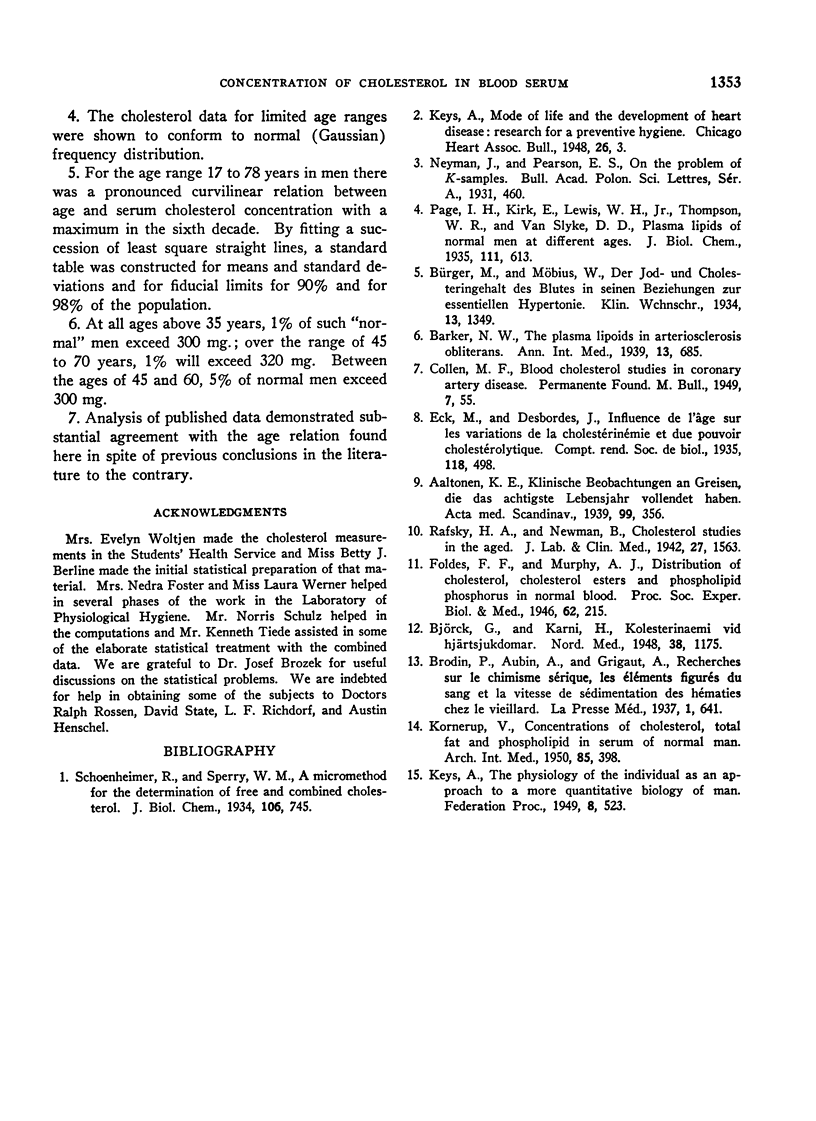Ancel Keys
Ancel Keys
1Laboratory of Physiological Hygiene, School of Public Health, University of Minnesota, Minneapolis
2Students' Health Service and the Department of Medicine, University of Minnesota, Minneapolis
1,2,
Olaf Mickelsen
Olaf Mickelsen
1Laboratory of Physiological Hygiene, School of Public Health, University of Minnesota, Minneapolis
2Students' Health Service and the Department of Medicine, University of Minnesota, Minneapolis
1,2,2,
Erma VO Miller
Erma VO Miller
1Laboratory of Physiological Hygiene, School of Public Health, University of Minnesota, Minneapolis
2Students' Health Service and the Department of Medicine, University of Minnesota, Minneapolis
1,2,
E Russell Hayes
E Russell Hayes
1Laboratory of Physiological Hygiene, School of Public Health, University of Minnesota, Minneapolis
2Students' Health Service and the Department of Medicine, University of Minnesota, Minneapolis
1,2,
Ramona L Todd
Ramona L Todd
1Laboratory of Physiological Hygiene, School of Public Health, University of Minnesota, Minneapolis
2Students' Health Service and the Department of Medicine, University of Minnesota, Minneapolis
1,2
1Laboratory of Physiological Hygiene, School of Public Health, University of Minnesota, Minneapolis
2Students' Health Service and the Department of Medicine, University of Minnesota, Minneapolis
2 Now in the Division of Chronic Diseases, U. S. Public Health Service, Washington, D. C.
1 The work reported here was aided by grants from the National Dairy Council, acting on behalf of the American Dairy Association, Chicago, and from the B. F. Nelson Research Fund, Minneapolis. The subjects studied in the Laboratory of Physiological Hygiene were available in connection with a long-range research project sponsored by the U. S. Public Health Service on the recommendation of the Cardiovascular Study Section.
